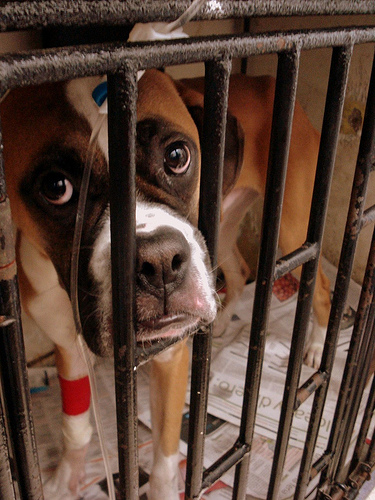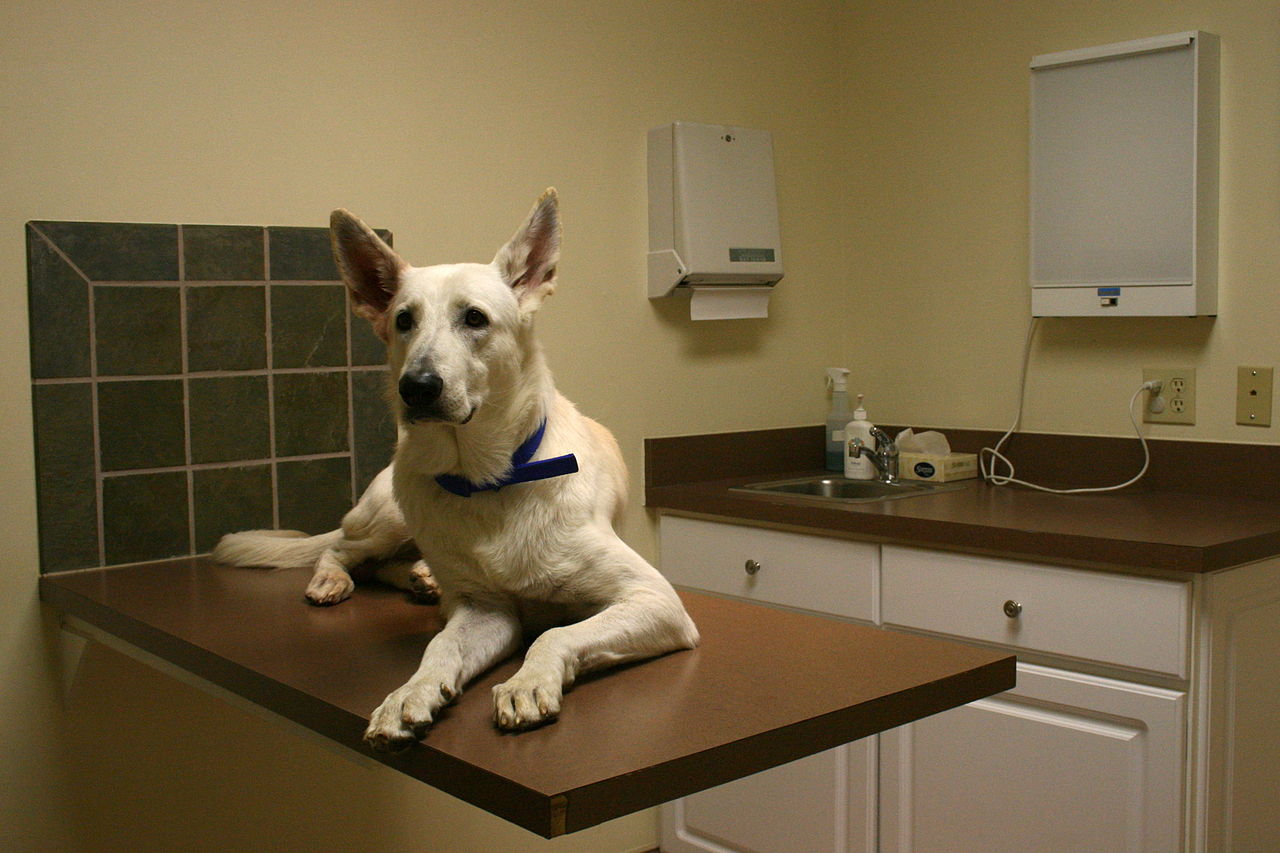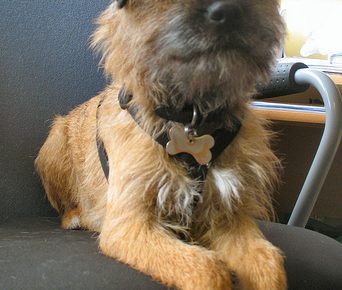
A spinal cord stroke or infarction in medical terms is called a fibrocartiliginous embolism (FCE). It is a blockage of a blood vessel in the spinal cord. An FCE can occur in humans, pigs, dogs, cats and horses.
The small bones of the vertebral column protects the spinal cord and are joined together by invertebral discs. The discs act as a cushion allowing the spine flexibility. Inside the discs is the nucleus pulposis, a gel-like material. If the disc ruptures laterally, nucleus pulposis releases into the spinal blood vessels blocking blood flow.
FCE usually affects large and giant breed dogs and males more often than females except for smaller dogs such as Shetland Sheepdogs and Miniature Schnauzers. But it can affect any dog.
FCE generally occurs as a result of overly strenuous exercise, fighting or a jumping misstep, but there are times when it seems to happen for no apparent reason. Signs can be sudden severe pain causing the dog to cry out. Pain can subside anywhere from minutes to a day later. Gait may be wobbly and there is partial to entire paralysis of the rear legs. The dog does not respond to pain after the initial occurrence of the injury.
Immediate care is necessary to minimize long-term damage. However during the first 24 hours, damage may be permanent. An MRI is the best diagnostic tool to view the spinal cord. Samples of spinal fluid and spinal cord blood may be taken for analysis among other tests.
Treatment is usually orally administered steroids to reduce inflammation. Antibiotics may be recommended to treat possible infection. The vet will set up a physical therapy program including exercises you can do at home. Laser therapy and underwater treadmill therapy also improve mobility greatly.
Provide your dog with a padded comfortable bed so s/he won’t suffer sores or any further injuries. Hand feed your dog for a while if necessary, give healthy treats (but watch the weight), and lots of attention and love which is a very important part of healing. If your dog is paralyzed, there could be a loss of bladder and fecal control. Try to keep your dog as clean as possible to avoid problems. Place newspapers nearby or a plastic sheet under the bed cover. Try to encourage potty breaks outdoors, using a harness to help your dog out.
If your dog collapses suddenly, take him/her to the vet or animal hospital ASAP. Immediate treatment can help improve the prognosis.


